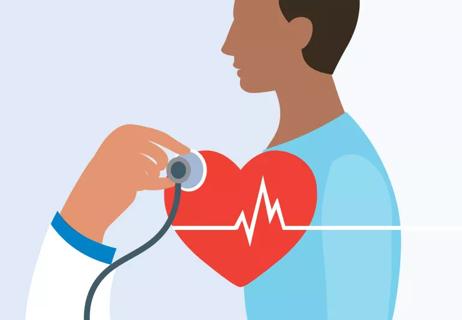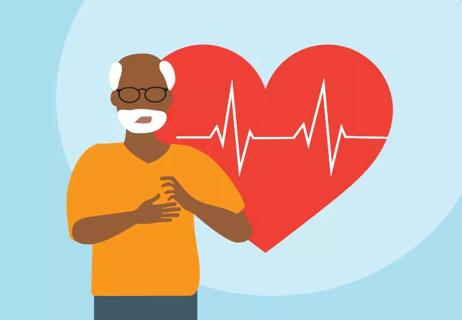Inactivity increases your risk of aches, pains and chronic diseases

If you spend much of your day sitting, you’re not alone: Americans spend an average of 9.5 hours a day on their butt at work or while hanging out at home. Sitting consumes most of our waking hours.
Advertisement
Cleveland Clinic is a non-profit academic medical center. Advertising on our site helps support our mission. We do not endorse non-Cleveland Clinic products or services. Policy
But the cumulative effect of all that prolonged sitting can hurt your health, even if you exercise. “It’s critically important to be physically active consistently and have less sedentary time,” says clinical physiologist Erik Van Iterson, PhD.
Here’s how a sedentary lifestyle puts you at risk, plus a few easy ways to get more movement into your day.
An inactive lifestyle means long hours sitting or lying down with little physical activity outside of your sleeping schedule. Sedentary hours also don’t need to be consecutive to impact your health.
Some say that as few as four to six hours of cumulative time sitting or lying down per day qualifies as sedentary. That includes hours spent:
At 10+ hours of daily sedentary behavior, research shows increased risk for cardiovascular disease and other health issues. That’s true even if you work out at some point during the day and meet recommended physical activity guidelines.
And know that even if you’re at a healthy weight and BMI (body mass index), hours of inactivity bring increased risk of cardiovascular disease.
“It’s about more than just body weight or BMI,” notes Dr. Van Iterson.
Advertisement
Your body often signals when you need more movement in daily life, says Dr. Van Iterson. Watch for these warning signs that point toward being too sedentary:
Sitting can lead to more serious health issues than feeling tired and creaky, emphasizes Dr. Van Iterson. High amounts of sedentary behavior and low levels of physical activity have been linked to a variety of chronic diseases, including:
When you sit for prolonged periods, your body burns fewer calories, as it doesn’t want to generate energy for muscles that aren’t being used.
Consistently taking in more energy (calories) than you burn off through physical activity and dedicated exercise typically adds pounds to your weight, which can lead to obesity, explains Dr. Van Iterson.
Inactivity can further promote fat storage by disrupting your hormonal balance to affect appetite regulation and metabolism.
Your heart is a muscle — and like any muscle, it weakens with inactivity.
There’s ample evidence that sitting too much increases your risk for heart disease, states Dr. Van Iterson. Prolonged sitting can also stress your system on a cellular level and, in turn, cause known risk factors for developing heart disease, such as hypertension (high blood pressure).
Research shows that inactivity increases your risk of heart disease and various cardiac issues, again, even if you’re at a healthy weight and BMI.
Advertisement
“It’s important to understand the cumulative impact of day-to-day lifestyle habits in addition to the number on the scale,” he adds.
Inactivity isn’t just tough on your body. It can also be a challenge to your mental health. An analysis of research found a connection between sedentary behavior (particularly involving TVs and computers) and depression.
When it comes to dodging cancer, it helps to be a moving target. Research shows that an inactive lifestyle increases your risk of certain cancers, including:
There’s a simple way to become less sedentary: Get up and get moving. Look for ways to work in bits of activity, or “exercise snacks,” throughout your day to break up extended periods of sitting.
“There are all sorts of opportunities — you just have to look for them,” encourages Dr. Van Iterson. “Many may even be considered low effort to incorporate.”
That would include things like:
Advertisement
All those extra movements can add up, says Dr. Van Iterson. “If you were to walk around for five minutes each hour during an eight-hour workday, you would essentially accumulate 40 minutes of movement without actually blocking out that time,” he says.
Make it a goal to identify situations where you can avoid sitting for more than an hour straight. Choose to incrementally move more frequently so the behavior becomes a habit.
“Sometimes, just adding up steps to reach an absolute number isn’t the point if you’re reaching the target number yet still find yourself sitting for approximately the same amount of time each day,” Dr. Van Iterson clarifies.
But adding extra movement is just part of the process. For best results, pair those added steps with a regular exercise routine of aerobic-based activities, like walking, running, cycling, swimming or whatever else you enjoy.
Try to work in regular aerobic exercise that raises your heart rate for more than several minutes, as that type of exercise is the most beneficial for your heart health.
“There is a cumulative effect to moving regularly, so it’s critically important to consistently be physically active, intentionally and regularly exercise, and have less daily sedentary time,” reiterates Dr. Van Iterson. “Every movement counts.”
Advertisement
Learn more about our editorial process.
Advertisement

If you don’t have other symptoms, try using relaxation techniques and vagal maneuvers to calm your heart down

Chronic stress can trigger palpitations, inflammation, angina and other serious heart issues

Yes — and depending on the level of dehydration, you may need emergency care

Research shows a strong association between rheumatoid arthritis and heart issues

Knowing what you can do to prevent or manage heart disease is half the battle

A skipped heartbeat is usually your heart returning to its normal electrical path

Don’t self-medicate with vitamin supplements without consulting a doctor first

Too little magnesium can make your heartbeat go off beat

The ‘sunshine vitamin’ is found naturally in some fish and is added to other foods

Autism and ADHD often go hand in hand, giving rise to the term AuDHD

The Yuzpe regimen is less effective than other forms of emergency contraceptives, and it’s associated with more side effects